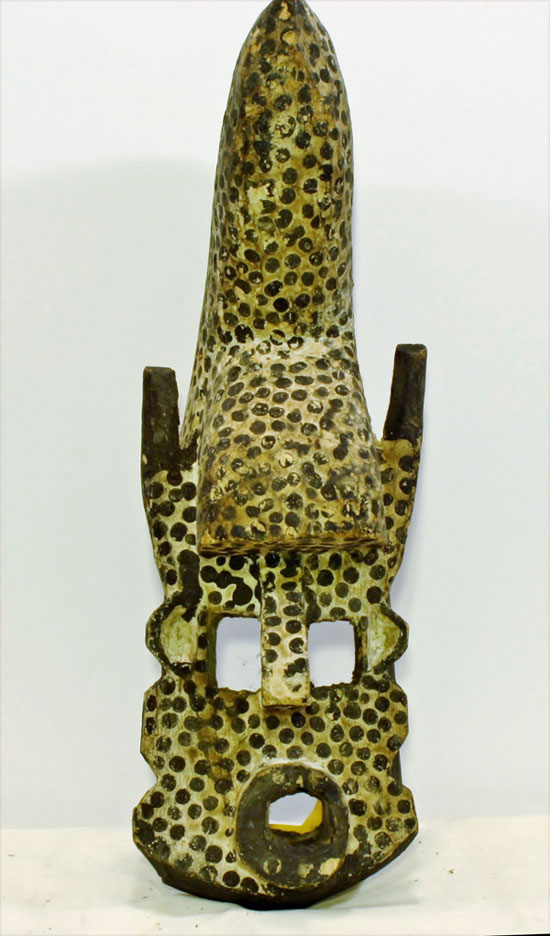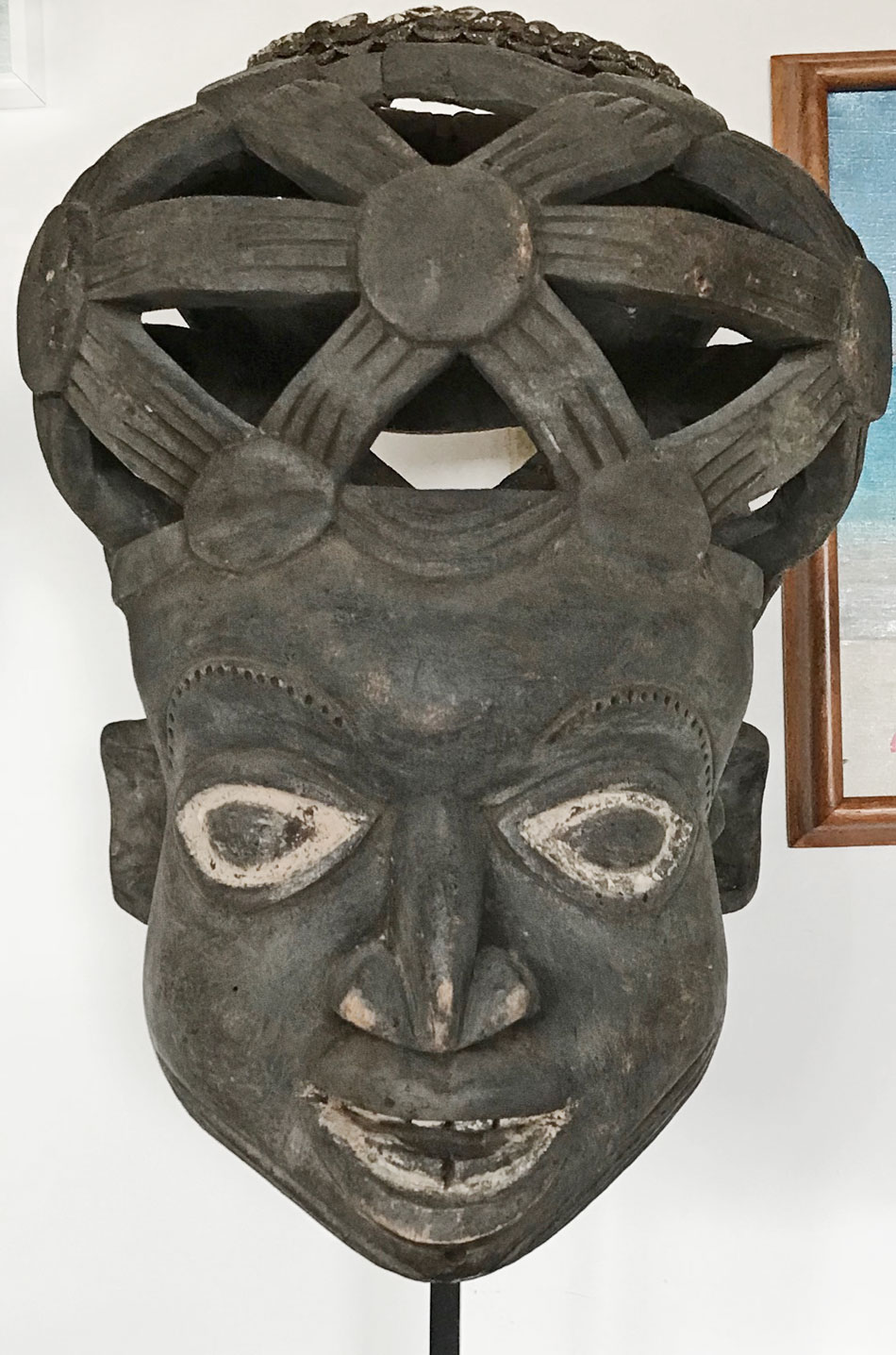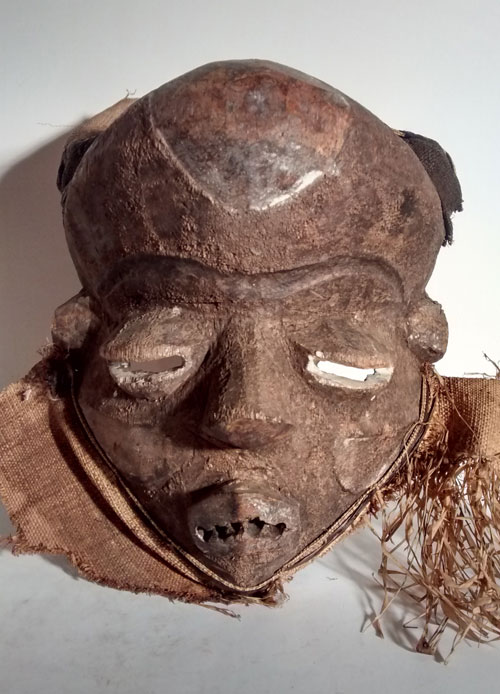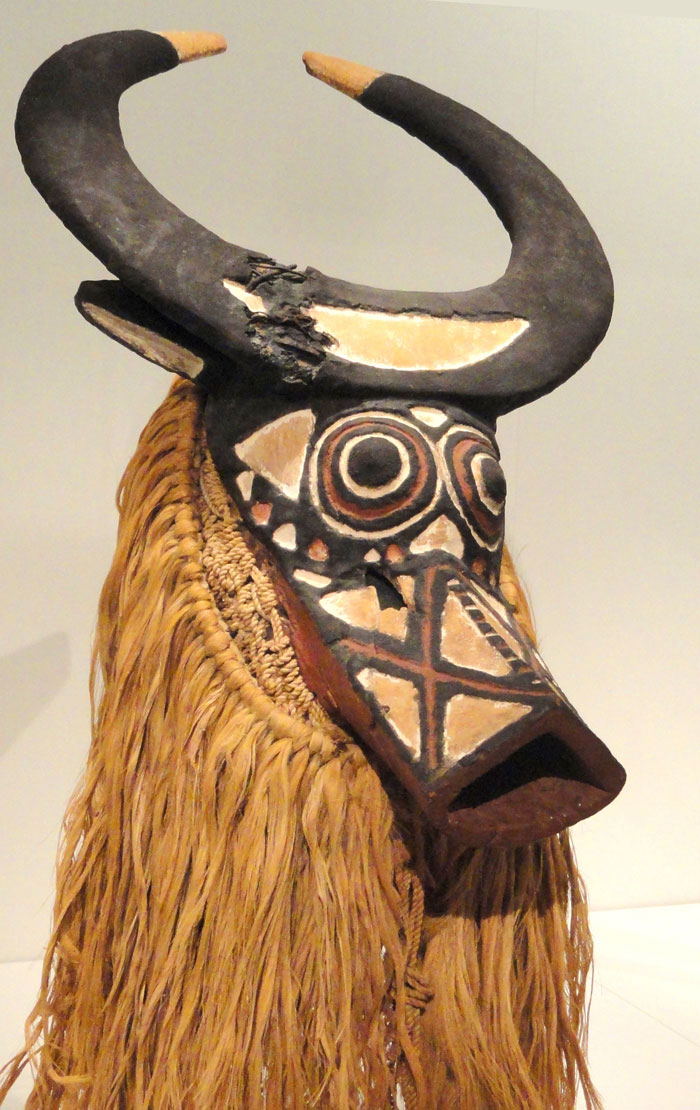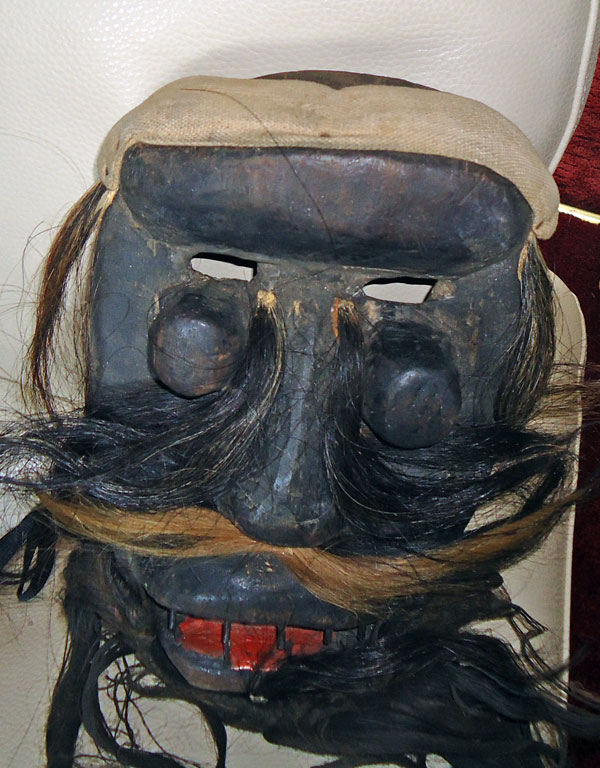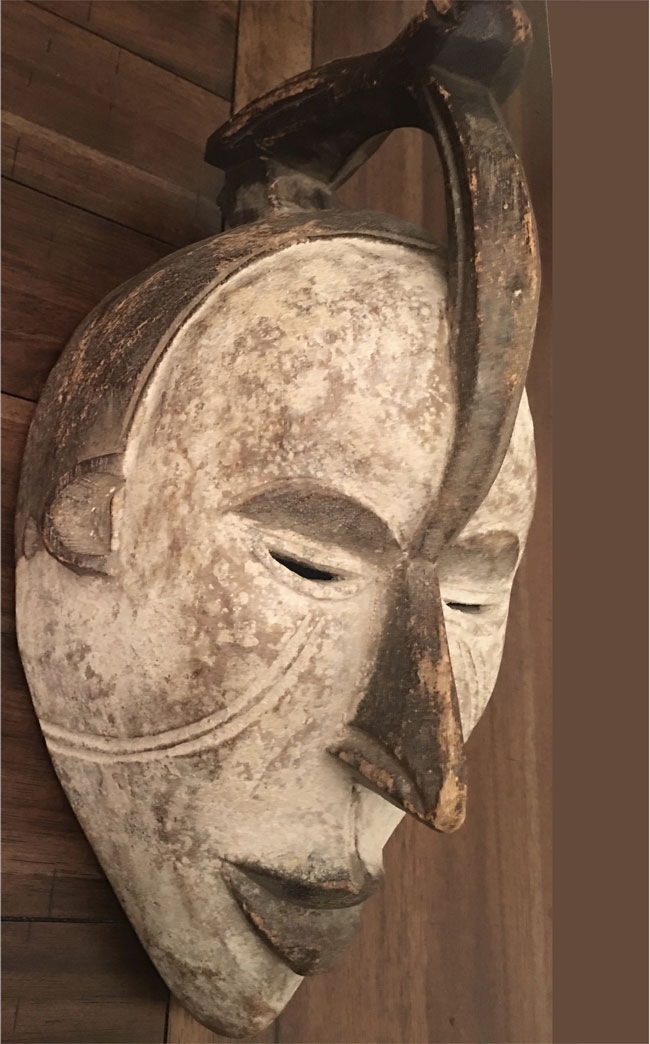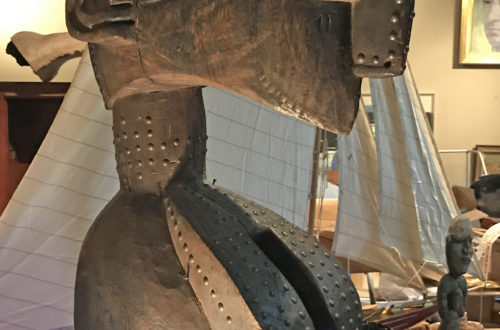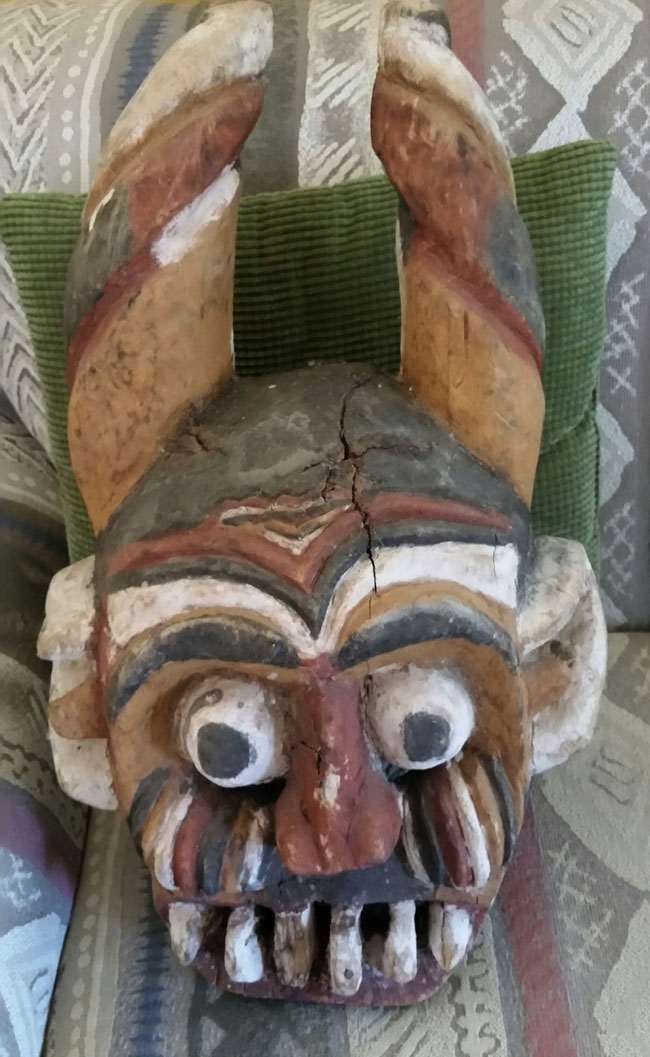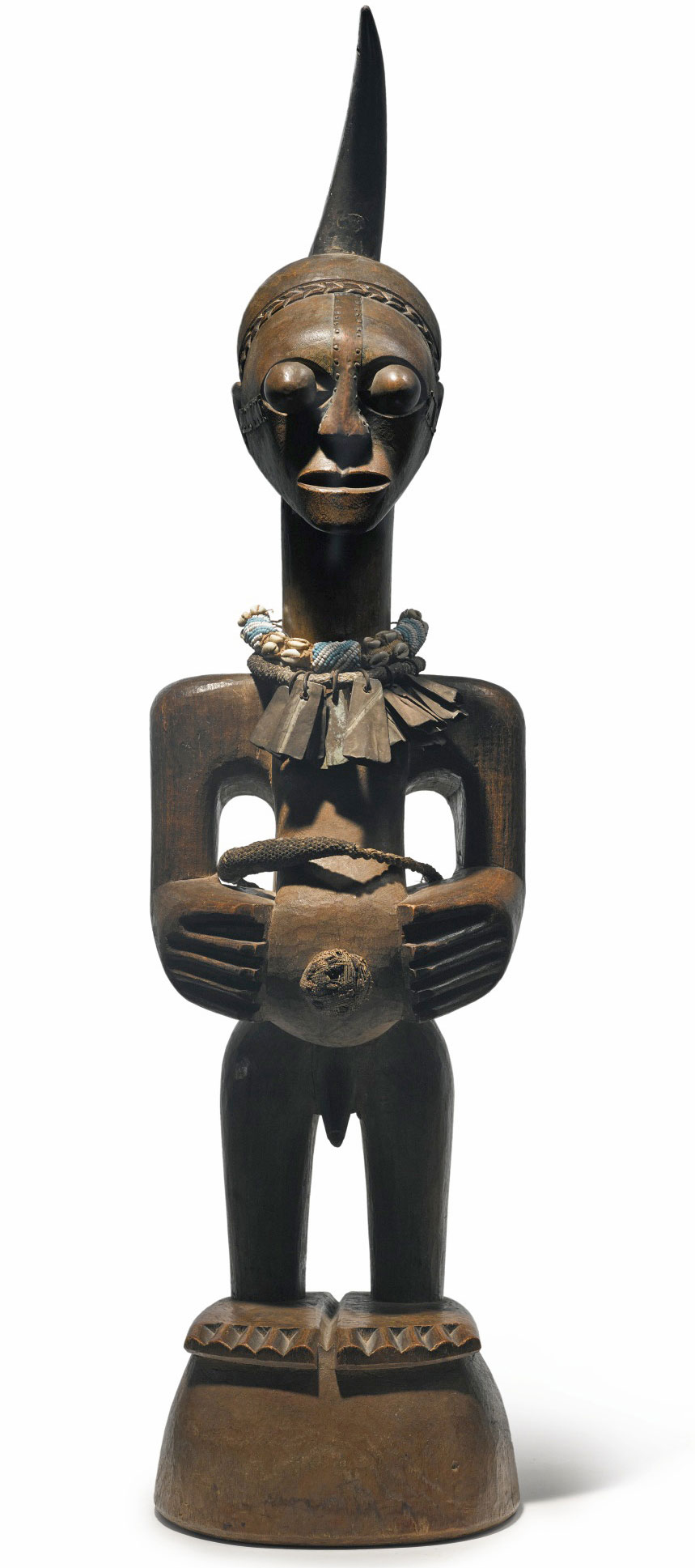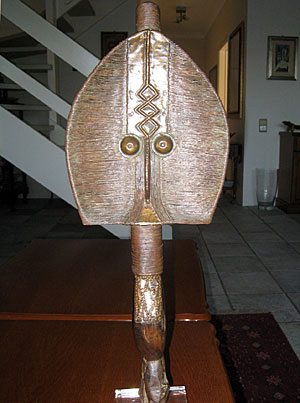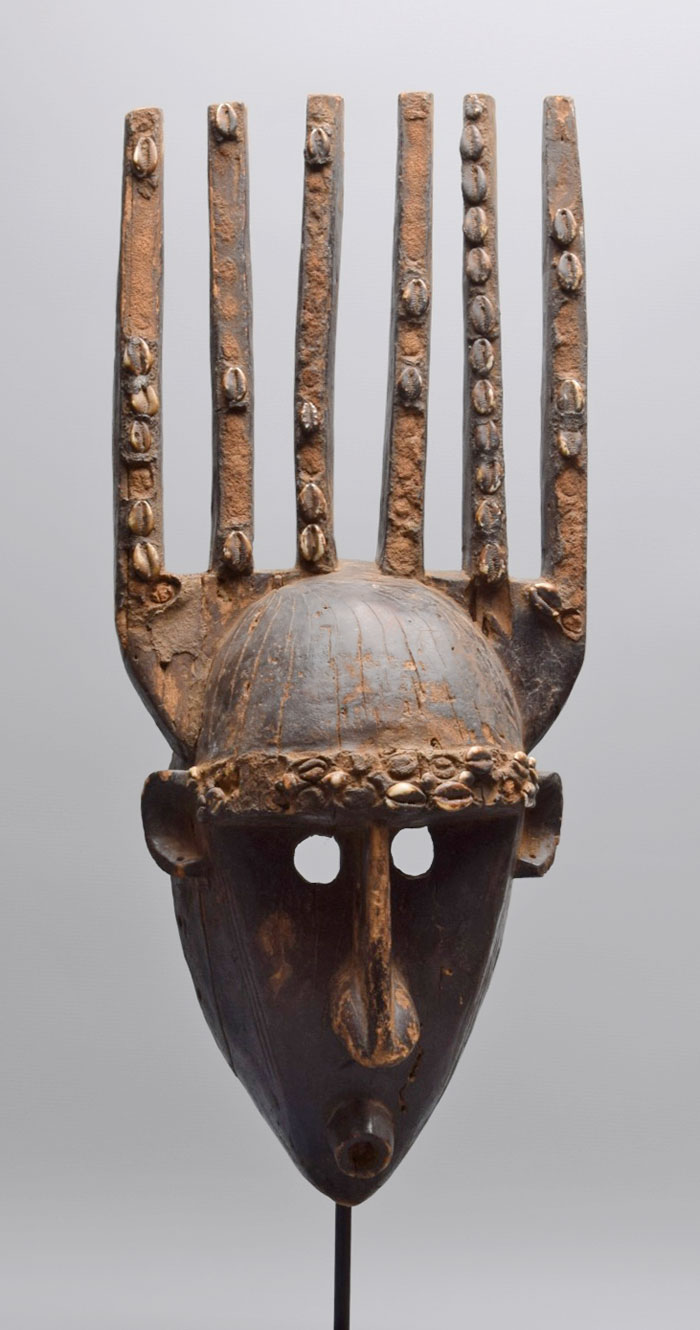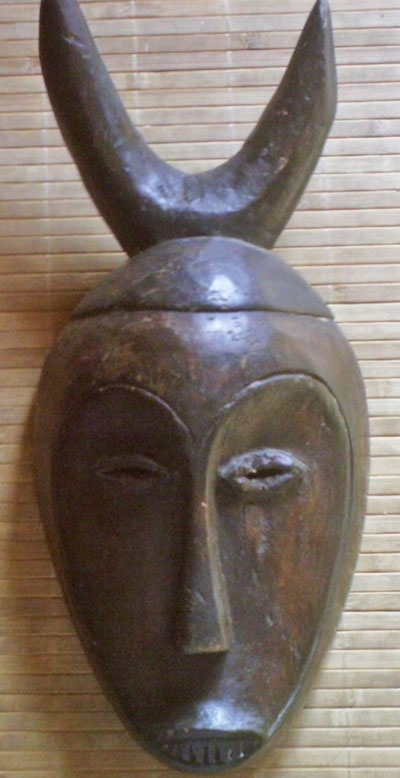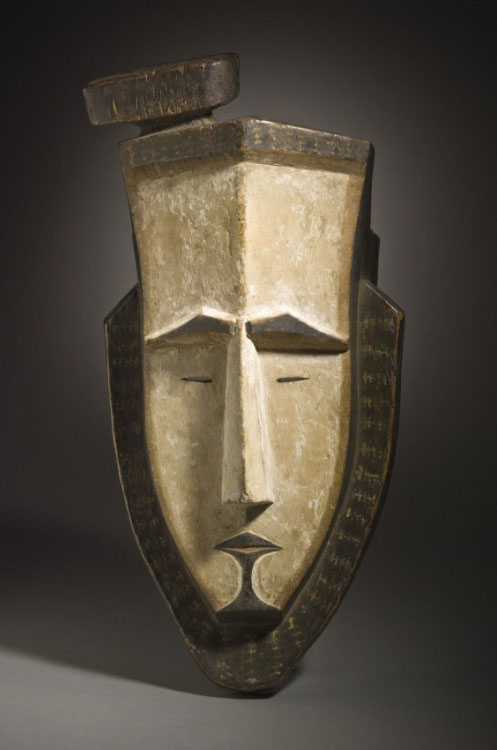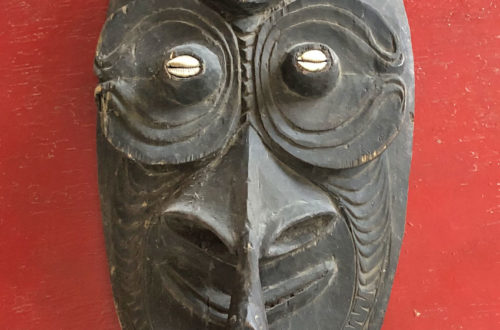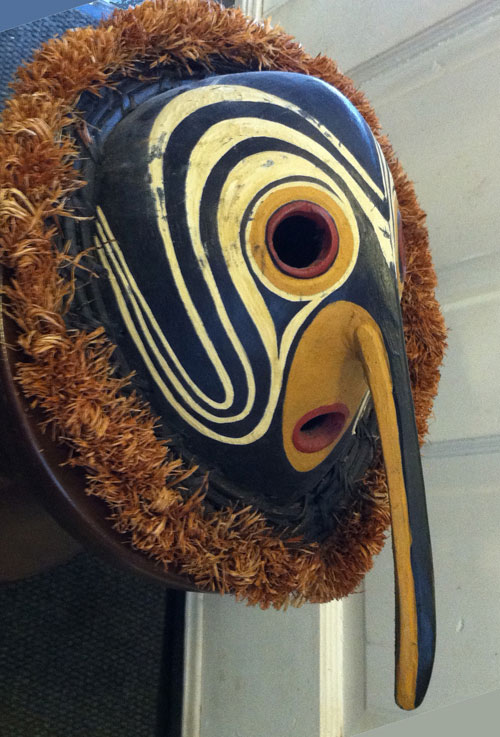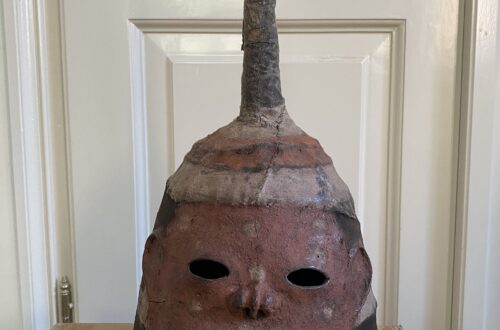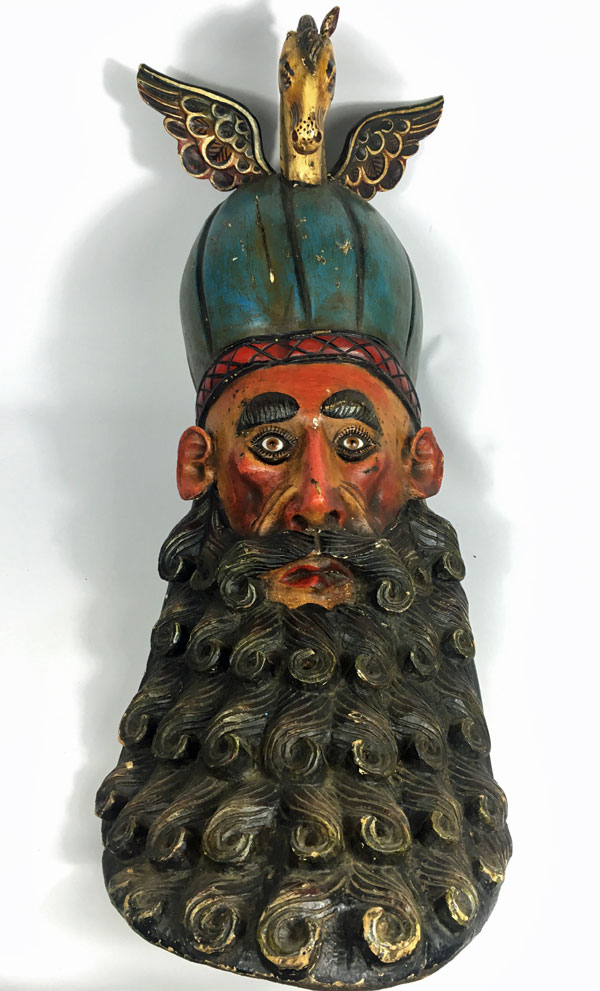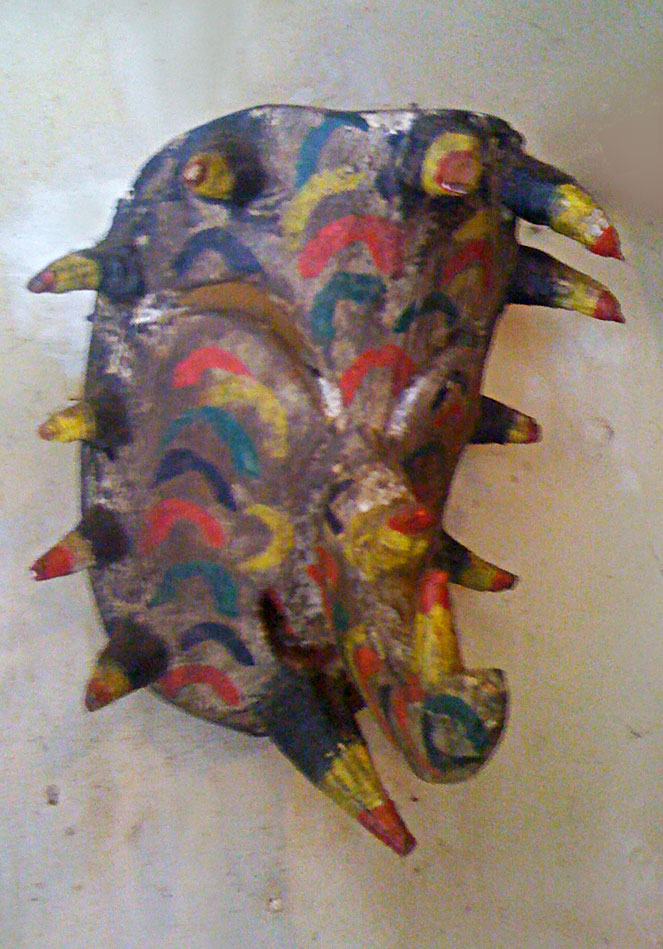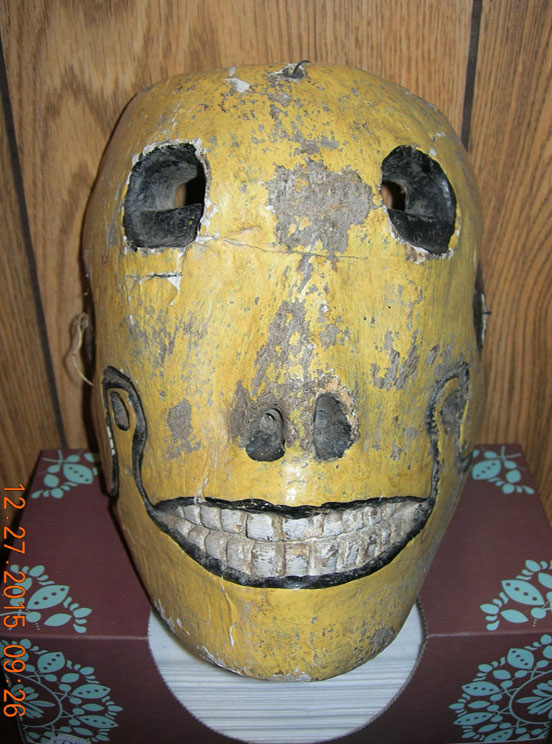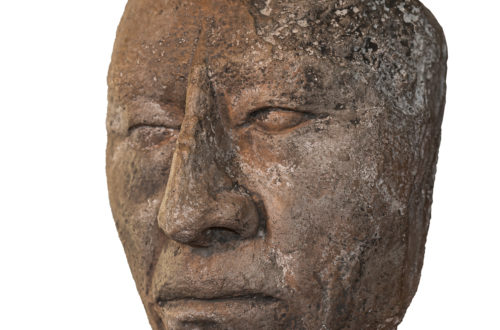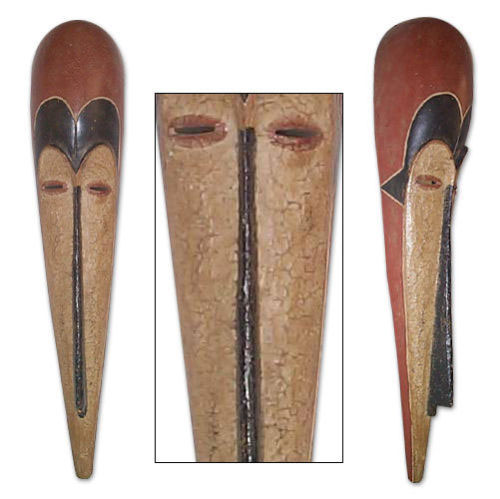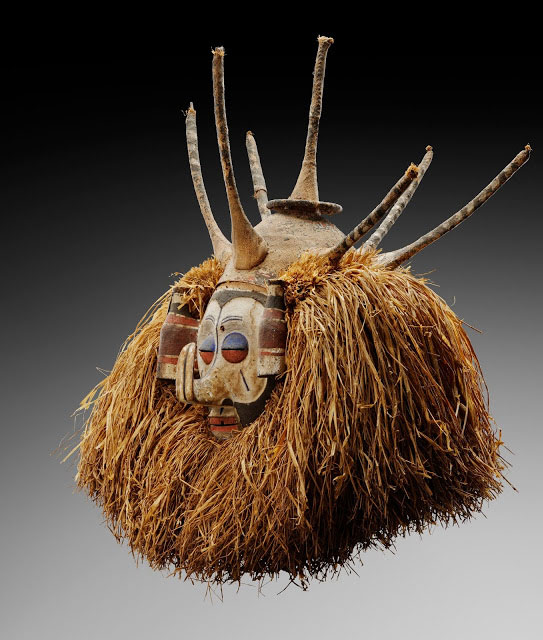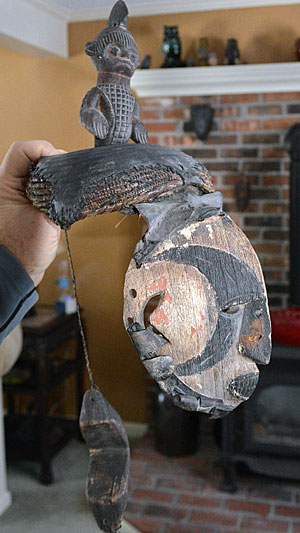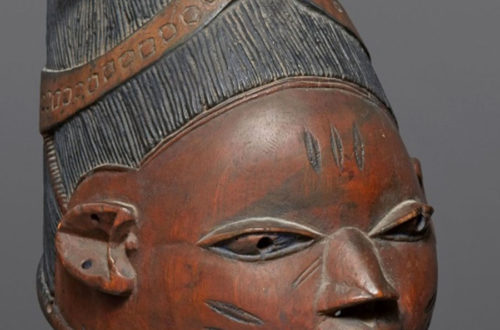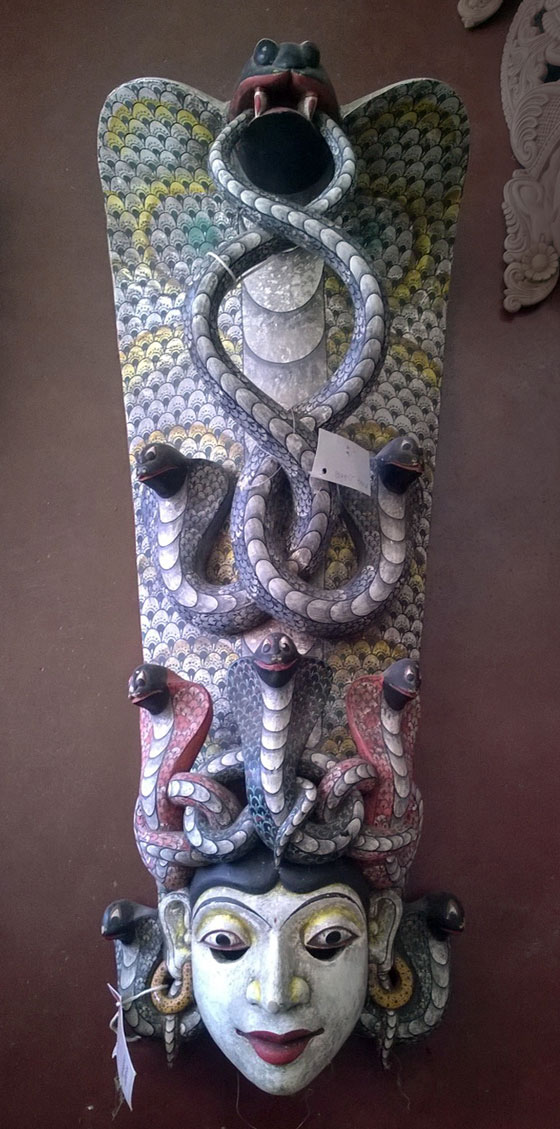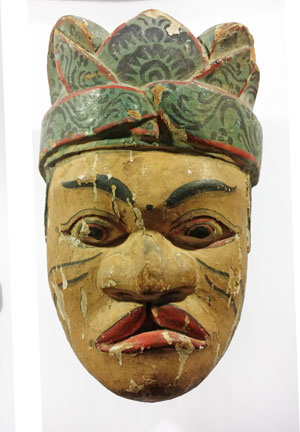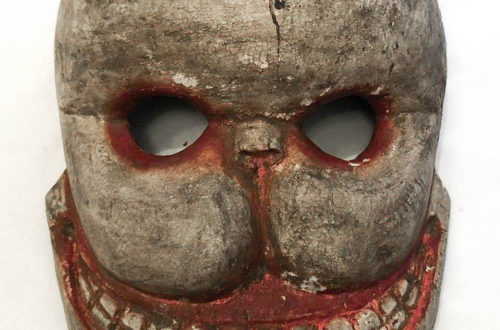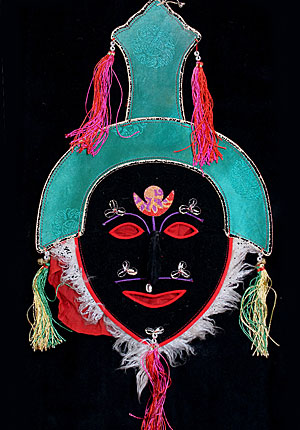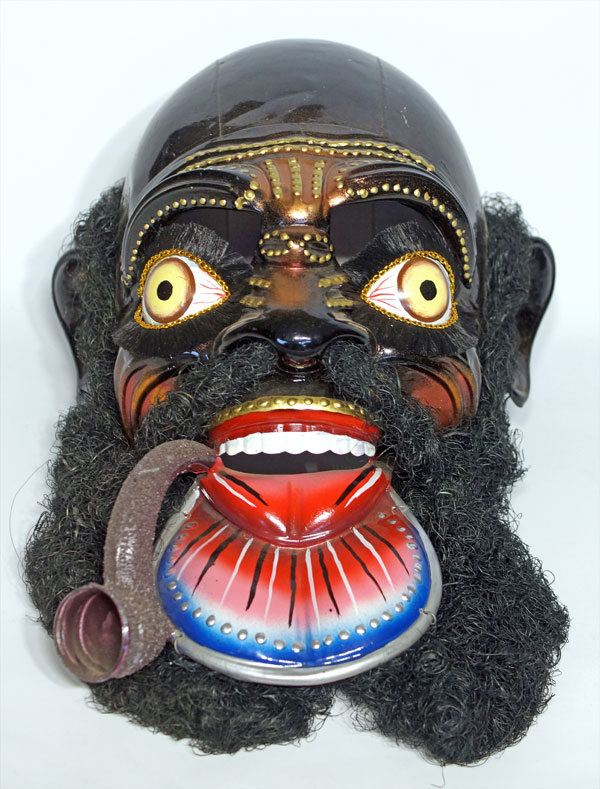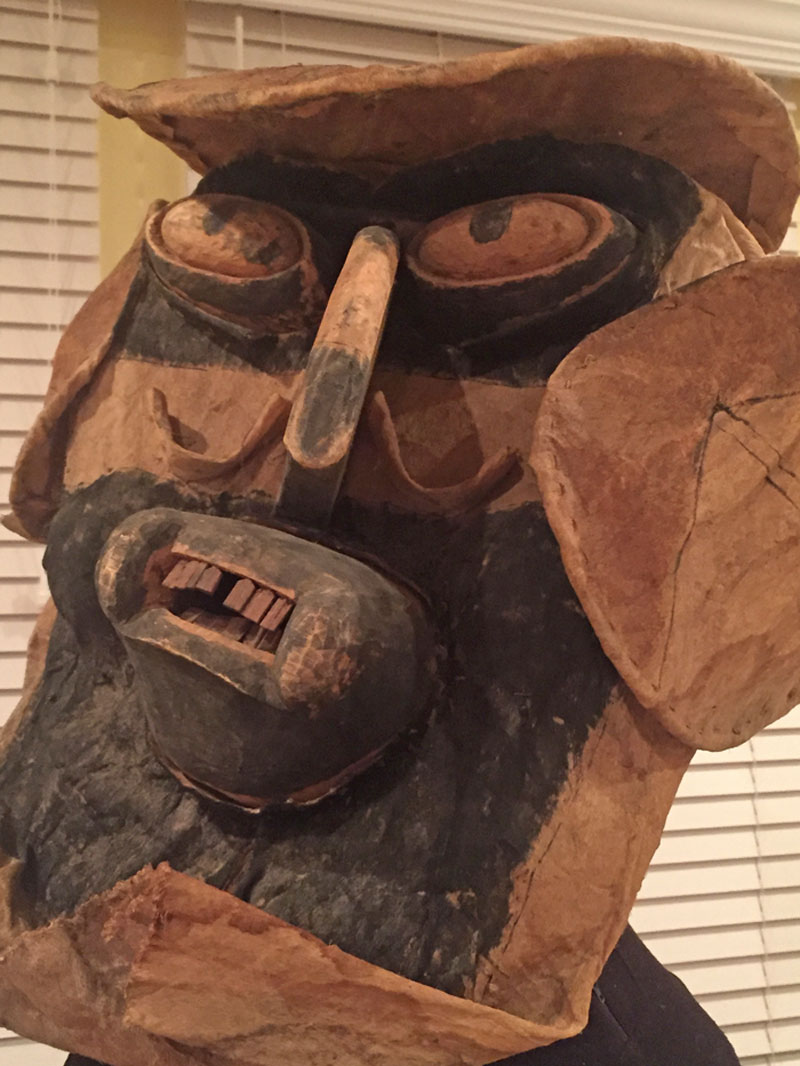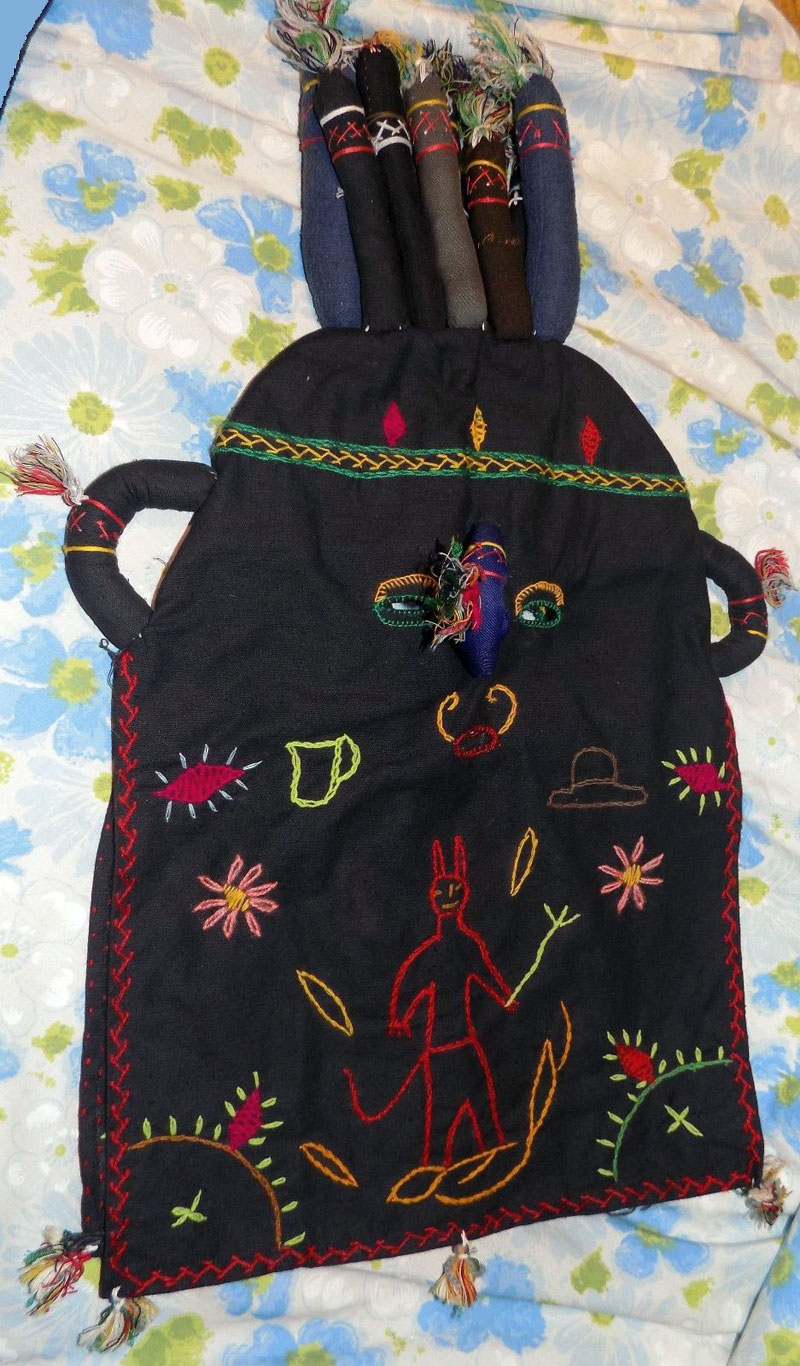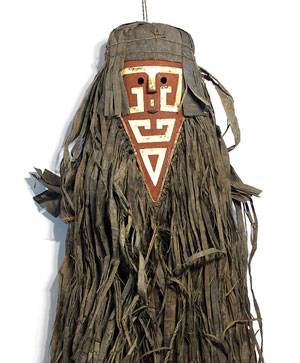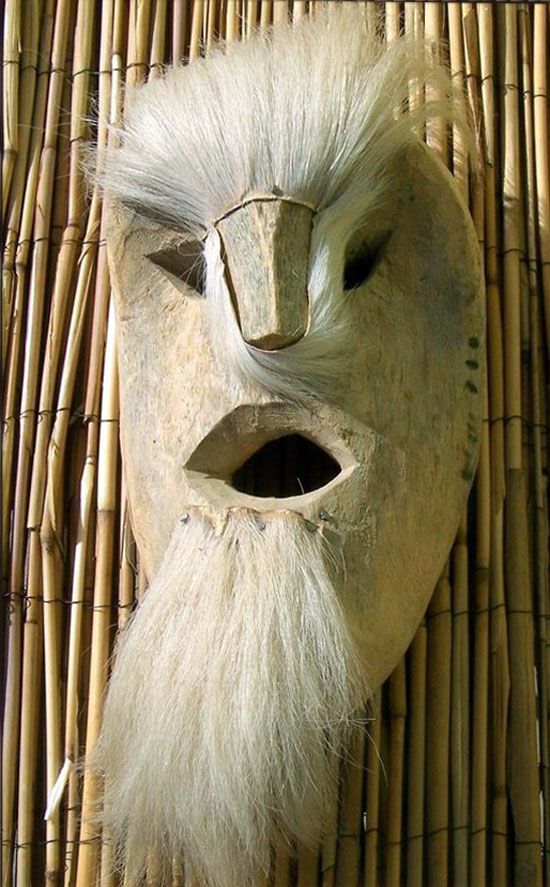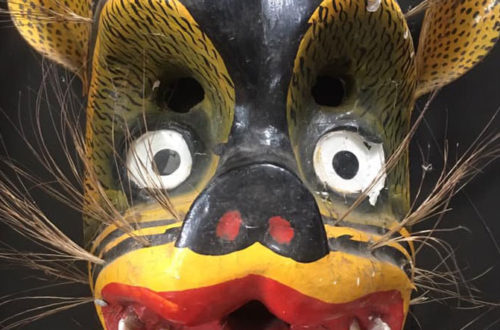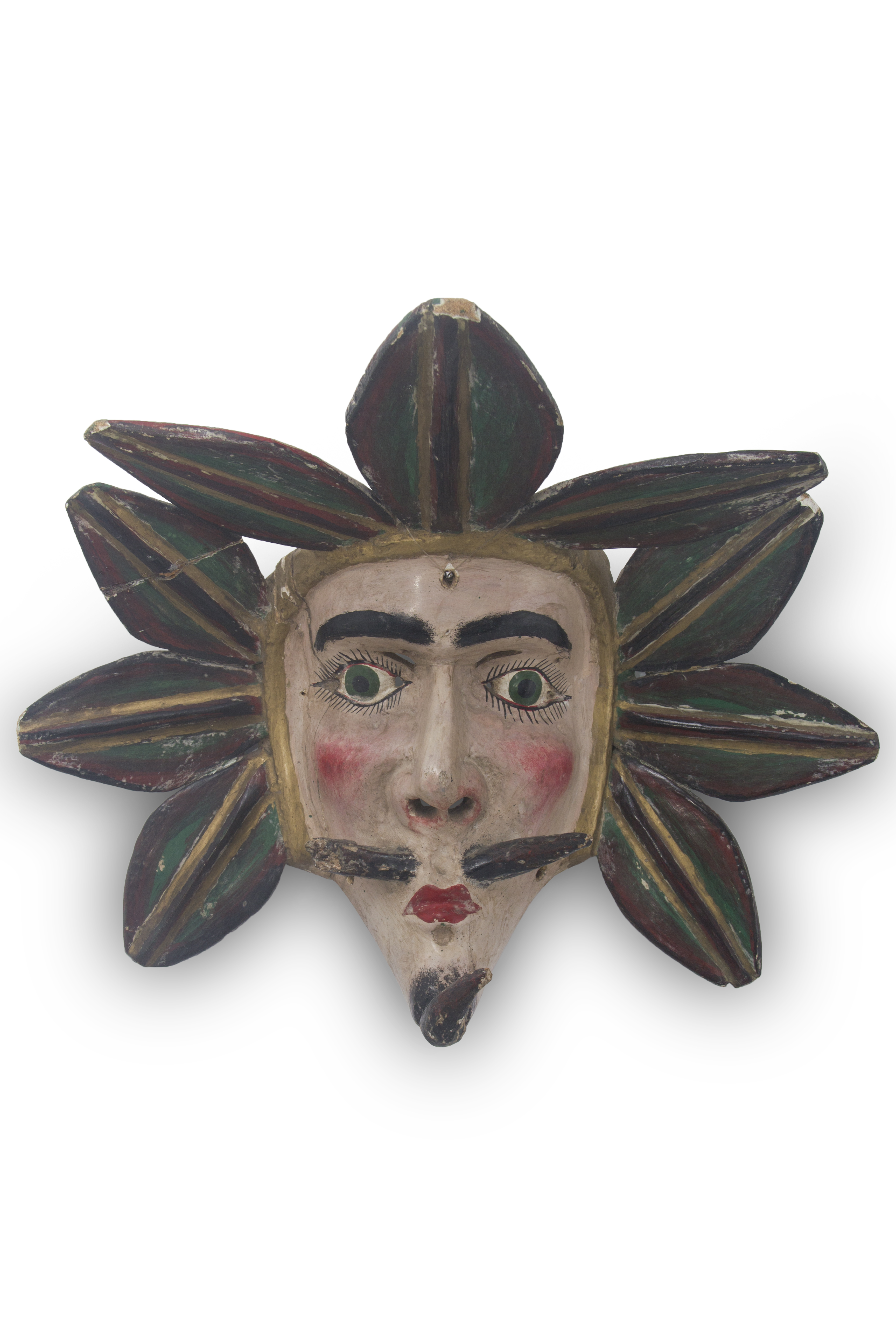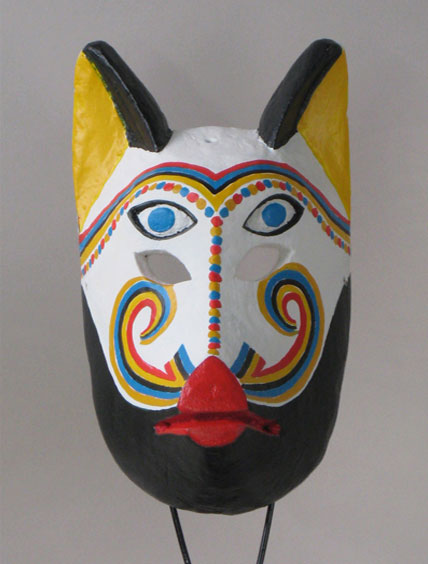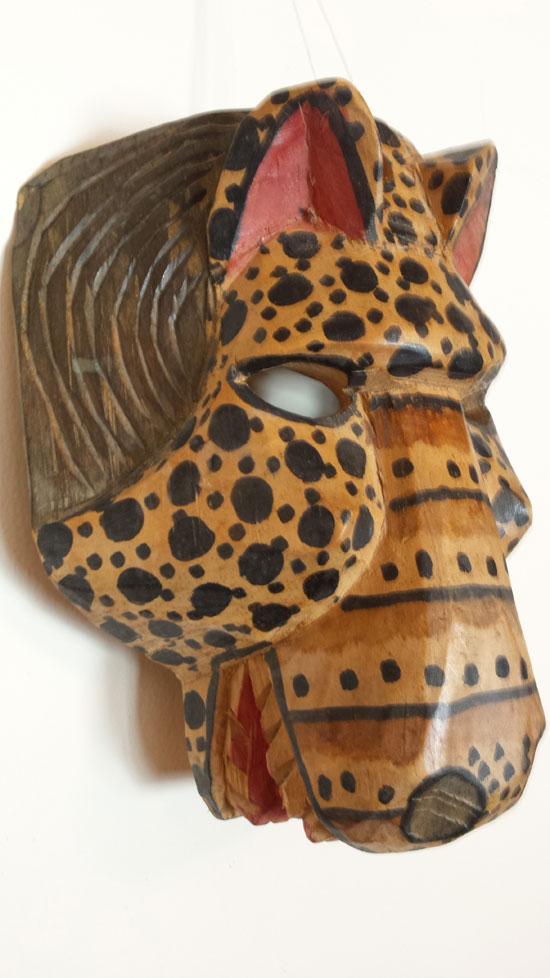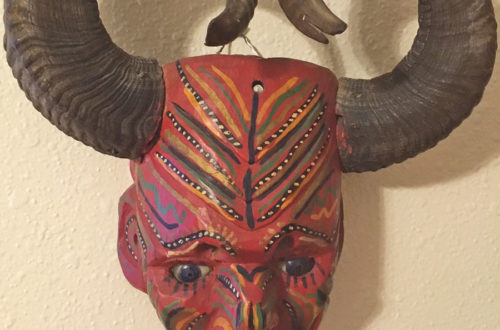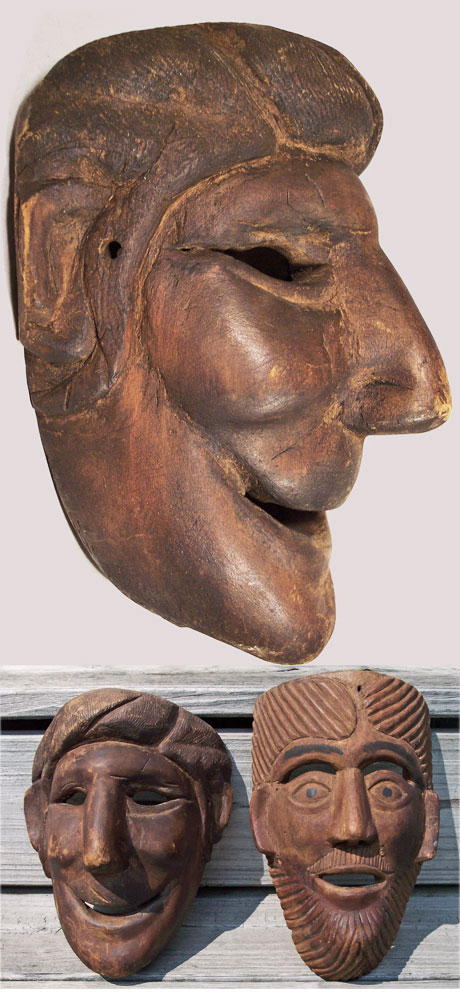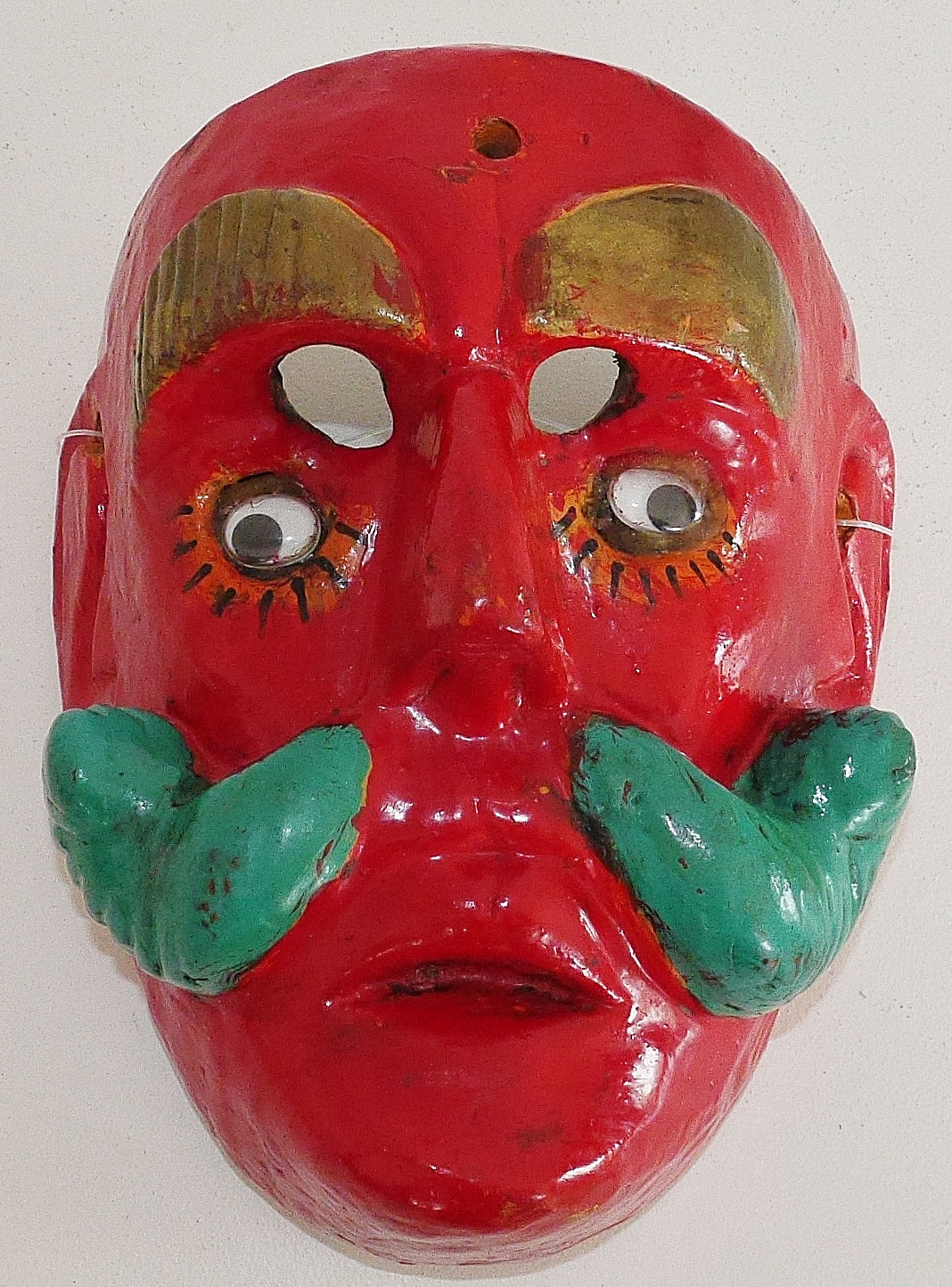Q: My father has an extensive collection of African masks and statues, some of which we have identified, and some that are still a mystery. He acquired this mask, along with most of his collection, between 15 and 20 years ago in Philadelphia at stores and festivals. This mask is wood with what appears to be old paint. Any information is appreciated. It is likely that he paid less than $100 for the mask. Dan, 1014 A: I would say it’s a Dogon leopard mask from Mali, but it could be some other critter. The Dogon people have created more than eighty mask types to represent characters in their…
-
-
Crazy West African mask
Q: This mask is 26cm high by 17cm wide and was bought in Bamako, Mali in 1986. Any info would be appreciated. Peter, 1013 A: Here is a mask that doesn’t resemble the styles of the country where it was purchased. It looks a little more like something from 600 miles to the Southwest. I’m thinking of the masks of the Bete, Guerre, and Wobe people in the Ivory Coast and Liberia. I hope someone will make a comment. This is a neat looking African mask, but is has very little value if it can’t be identified accurately. Save Save Save
-
Something different
I’ve never pictured anything other than masks on this site. But August has been slow. So let’s show something else that is closely related. Wooden masks are used to depict deities or ancestors. Often they are believed to channel spirits when worn by ceremonial dancers. But statues and sculptures are used to represent, connect to, or communicate with spiritual forces in different ways. Here is a beautiful spirit figure. The Kunin Songye Power Statue we have here is by an important carver and is unusual in its design. There is also sacred materials added to the inside of the belly, plus various adornments. It doesn’t look like a Kifwebe mask…
-
Rare Micronesian mask
This is an old mask called a tapuanu acquired circa 1885 in the Mortlock Islands (part of the Carolines). What makes it unusual is that the Micronesian people, who occupy a very large portion of the Pacific Ocean, are seldom interested in masks. Unlike those of the Indonesian and Melanesian cultures that are heavily into masquerade, you won’t see Micronesian masks very often. Our handsome tapuanu is carved wood 21 inches tall. It resides at the Los Angeles County Museum of Art (LACMA). A+ Save
-
Another great decorative
Q: I’m trying to determine the age of this (Mexican?) mask. The external patina does not look incredibly old but the inside looks like it has had heavy use. It is very large at 34″ long and entirely carved out of a light and soft wood. The eyes are glass. To me this looks similar to glass eye masks said to be from the 1940s but I have not been able to find a similar figure from that period. Any help or suggestions would be appreciated! I have a few antique masks on display but not enough to call it a collection. I am interested in masks that are unusual…
-
It’s a buyers market
These two masks are called Ngils. Their design is unique to the Fang people who are spread out in South Cameroon, Equatorial Guinea and Gabon. The first mask is quite nice. The second (front view only) is beautiful, larger, and appears to be old and used. Actually, both have been made by talented professional carvers for sale to collectors. Maybe you could buy the first one for $100 and the second for $500 in this economic climate. Regardless, these two examples would look great in any collection of African traditional art. Most of the masks you see in tourist shops, eBay, thrift shops and garage sales are not nearly this…
-
Valuable Sri Lankan mask
Q: I could use your advice on something. My contact in Sri Lanka found this mask, formerly in a Sri Lankan museum, and now for sale by the family that originally owned it. It goes back about 50-60 years. With my guy’s commission, they are asking $1250 plus shipping. That seems high to me. What do you think, informally? 1008 A: I think the $1250 price is about right. There are museums who would love to display this piece. Carving quality is excellent, though the colors are faded. Look at the big Garuda on page 85 of The Letts Guide to Collecting Masks. It’s 1983 selling price would be about…
-
Black Moreno from La Paz
My partner, Troy, will be in Bolivia looking for masks in a few weeks. So I thought you might enjoy seeing a very nice example from Aaron’s collection. The character is called “Moreno” and he is paraded in the Senor del Gran Poder festival of the capitol, La Paz. Other cities in Bolivia have somewhat different celebrations, but they all use masks of incredibly fine workmanship, many of which are made of sheet metal like this one. Masquerade in Bolivia is as spectacular as those of the Lenten festivals in Bavaria, the dance dramas of Bali, Japanese Noh theater, and our own Northwest Coast Indians. Let’s all wish Troy well…
-
New Tarahumara mask
Q: I have been hesitating about whether to buy these masks that are purportedly from the Tarahumaras. I have never seen anything like them before. They are 12-15 inches high. What do you think? Christophe, 1006 A: They are from the Tarahumara who live in the remote Copper Canyons of southwestern part of the state of Chihuahua in northwestern Mexico. These isolated Indians are the fastest long-distance runners in the world. The masks are new, but traditional in style. You can see one that is older and has a little color on page 115 of our book, Masks of the World, by Ibold & Yohn. B Save Save
-
Repro of Guatemalan Jaguar mask
Q: Can you give me a little more information on the attached mask. Value, type, origins. Laurie, 1005 A: Jaguars are a character in several traditional dances performed by indigenous Guatemalans, who are decedents of the Maya. This example is well carved and nicely painted. However, it was made to be sold, either to tourists or exporters. This lowers the mask’s value. C+ The good news is that people with limited budgets can find excellent reproductions of traditional dance masks at tourist shops and on eBay, enabling them to assemble collections that are almost as beautiful as those in museums.
